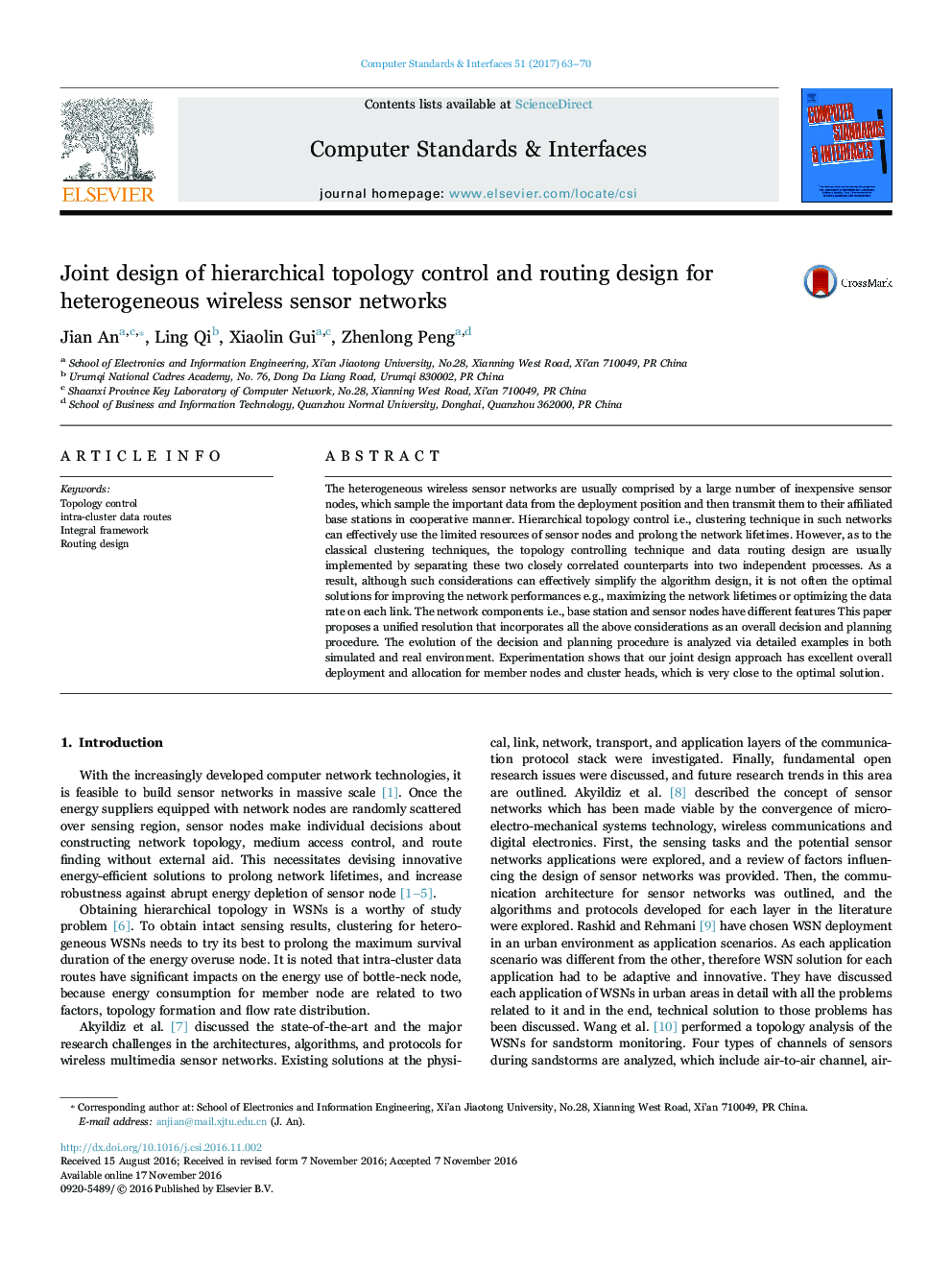| Article ID | Journal | Published Year | Pages | File Type |
|---|---|---|---|---|
| 4955010 | Computer Standards & Interfaces | 2017 | 8 Pages |
Abstract
The heterogeneous wireless sensor networks are usually comprised by a large number of inexpensive sensor nodes, which sample the important data from the deployment position and then transmit them to their affiliated base stations in cooperative manner. Hierarchical topology control i.e., clustering technique in such networks can effectively use the limited resources of sensor nodes and prolong the network lifetimes. However, as to the classical clustering techniques, the topology controlling technique and data routing design are usually implemented by separating these two closely correlated counterparts into two independent processes. As a result, although such considerations can effectively simplify the algorithm design, it is not often the optimal solutions for improving the network performances e.g., maximizing the network lifetimes or optimizing the data rate on each link. The network components i.e., base station and sensor nodes have different features This paper proposes a unified resolution that incorporates all the above considerations as an overall decision and planning procedure. The evolution of the decision and planning procedure is analyzed via detailed examples in both simulated and real environment. Experimentation shows that our joint design approach has excellent overall deployment and allocation for member nodes and cluster heads, which is very close to the optimal solution.
Keywords
Related Topics
Physical Sciences and Engineering
Computer Science
Computer Networks and Communications
Authors
Jian An, Ling Qi, Xiaolin Gui, Zhenlong Peng,
